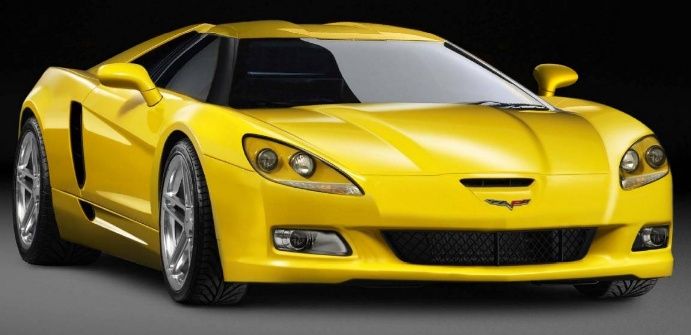Among the GM product details revealed as part of the contract settlement with the UAW, is another intriguing detail about the C7 Corvette: it gets a dual clutch transmission. This form of transmission, which uses two shafts and two clutches, offers the win-win of both increased fuel economy and quicker shifts.
Language in the contract specifies the transmission is to be built at the Toledo plant for 2012, which is also the target date for the C7, and specifies the unit is to be built for the Corvette. Whether it could be expanded to other GM vehicles is not known.
Speculating about the next generation Corvette has been an American pastime for decades. But, seldom has there been so much to go on. The contract clearly specifies 2012 for the new one. Word that it will have a dual-clutch transmission suggests a very no-compromises approach to the car. Inclusion of the Cadillac XLR in the product plan also says that the Corvette and Cadillac will continue to share the platform.
So, where does that leave speculation about a mid-engined Corvette?
Maybe right on track.
Six weeks ago, Peter DeLorenzo of AutoExtremist.com confidently predicted a 2010 mid-engined Corvette, asserting that his report was based on high-level GM sources. At the very least, DeLorenzo got the timetable wrong. But, that someone in GM is talking about a mid-engined Corvette is, actually, a pretty significant point.
It’s significant because the UAW contract now makes it clear that the C7 is, in fact, locked in and approved by the top brass.
For the GM/UAW contract to specify both the introduction date for the new Corvette and the new transmission which will be built for it, the car must already have been approved for production. That means the powertrain is set. And that means the configuration of the car is also set. GM doesn’t sign off on new models piecemeal.
Though the timetable is wrong, the core of DeLorenzo’s report could be true. He said that approval by the top brass for the new car was to occur this past month, i.e., September. That could be accurate. Approving a car in late 2007 for 2010 introduction is, on the surface, a very short timetable for a new car, especially something as completely new to GM as a mid-engine car. But approval of such a car for 2012 in September of 2007 is a comfortable and realistic lead time.
By itself, a dual clutch transmission may not be all that revolutionary by 2012. Chrysler says it will have one on the market in 2010, prompted by its fuel economy benefits. But a dual clutch transmission is ideally suited to a mid-engine car because it can provide very smooth power delivery during cornering.
But there may also be something more going on.
Over the past several years, it has been said that Rick Wagoner’s vision for GM’s future is one of leapfrogging the competition through technology, and that he views the Corvette as a symbol and showcase of GM’s technological superiority. It’s been fashionable to criticize Wagoner as a bean-counter without vision – I’ve done it myself – but the UAW contract deal suggests he is far stronger and smarter than his image.
The GM/UAW contract was positively brilliant, both in conception and execution. In hindsight, the decision to cancel the domestic Zeta platform and outsource it to Holden may have been, at least in part, a way of making a credible threat toward the UAW.
This much, however, is very clear: there is one man running GM and that same man is going to be running GM for as long as he wants to run GM: Wagoner.
The next Corvette is not going to be an afterthought, something that GM brass didn’t fully understand and didn’t really want. The next Corvette is going to be a statement.
It is also going to appeal to a younger demographic than does the current model. Granted, there is no other domestic brand in which both the bond and the interaction between the manufacturer and the buyer is closer than it is with the Corvette. But, the Corvette is fast becoming an old fart’s car. GM has already committed to the Camaro, front engine, rear wheel drive, independent rear suspension, so it follows that the next Corvette should be different – really different.
At some level, DeLorenzo may very well be correct.
We’ll find out in 2012.

